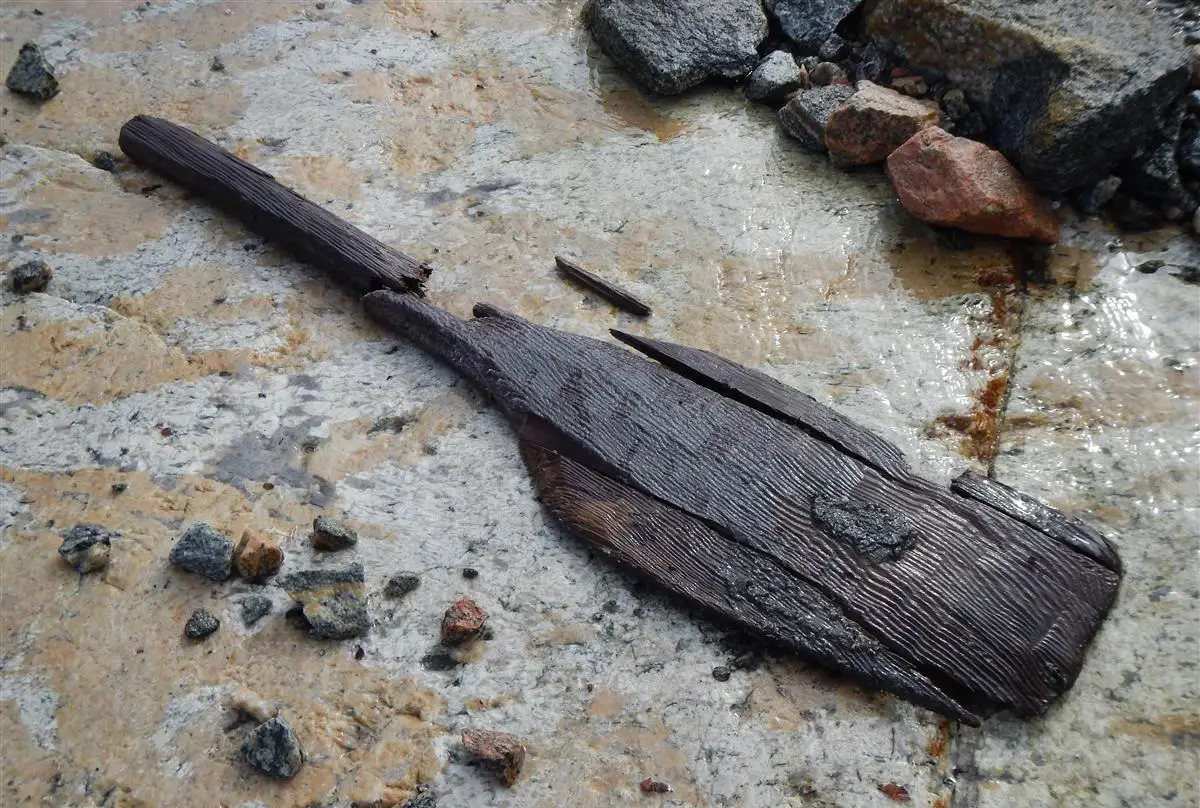The Møre and Romsdal County Municipality in western Norway has issued a warning of melting snow exposing objects of archaeological interest.
In a recent press statement, local authorities are asking for hikers and outdoor enthusiasts in the mountains of Møre og Romsdal county to report any objects they find exposed in melting snowdrifts.
“This summer is reminiscent of 2014, which was a particularly dry and hot summer. In combination with little snow in the mountains, the size of the snowdrifts in Høgfjelle decreased sharply. This led to the county council receiving reports of very exciting discoveries, which had melted from old snowdrifts,” said the Møre and Romsdal County Municipality.
Back in 2014, the remains of a wooden spade from the Roman period was found between Eikesdalen and Romsdal. In addition, numerous objects linked to hunting and trapping of wild reindeer was discovered, such as scare sticks, several antlers and bones with slaughter marks, wooden rattles, and braided rope.
Snowdrifts and ice patches can preserve organic remains for long periods because cold conditions slow down chemical and biological processes, almost stopping them at freezing temperatures.
The Møre and Romsdal County Municipality is asking for the public to document any discoveries with a photograph, and where possible, to note down the GPS coordinates (or mark on a map) so that archaeologists can retrieve the object(s).
If finds such as an arrowhead can be safely transported without causing damage, then document the place of discovery, wrap the object and place in a refrigerator, then notify your local authorities. Objects such as bone or antlers can be placed in a freezer to ensure preservation.
Contact person for finds in Høgfjellet:
Advisor/archaeologist Guro Dehli Sanden, tel. 71 28 03 26, e-mail; [email protected]
Consultant/archaeologist Kristoffer Dahle, tel. 71 28 03 29, mobile 99 22 81 03, e-mail: [email protected]
Header Image Credit : Dag Ringstad
Sources : Møre and Romsdal County Municipality







